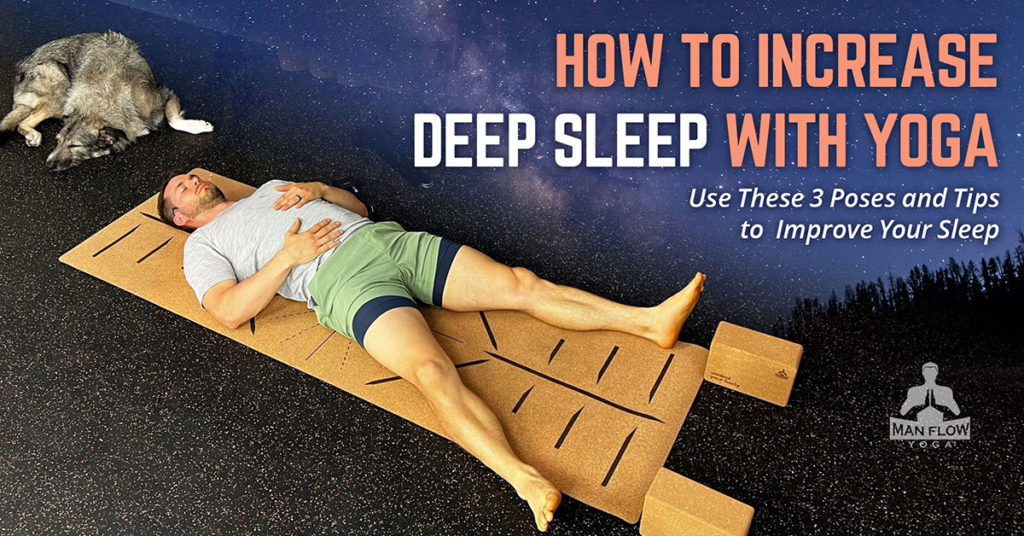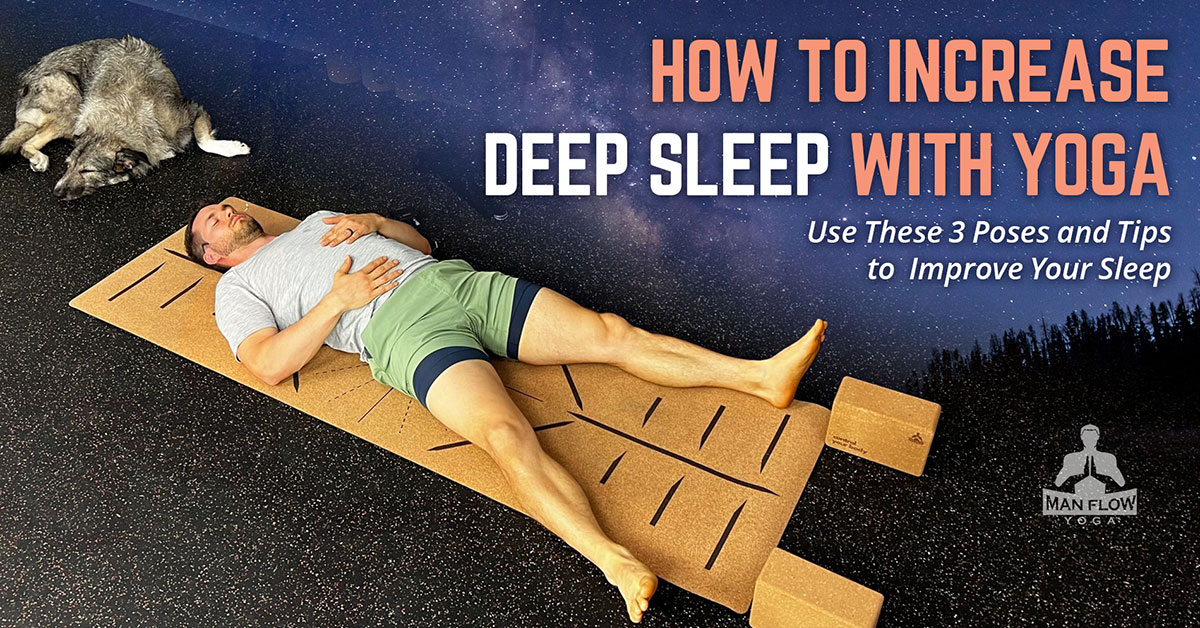Tips for Better Sleep
A dedicated sleep ritual that includes yoga is the secret to enjoying deep sleep, performing your best throughout the day, and improving health and fitness.
Few people give much thought to a “sleep ritual” and the impact it has not only on sleep but also on their performance throughout the day. First, you must create a proper sleep environment. Block sunlight from the bedroom since the sun can wake you prematurely in the early morning. Make your bedroom as comfortable as possible by blocking light with blackout curtains or wearing an eye mask.
Lower your thermostat before you go to bed. Cooler temperatures have been shown to induce sleep and help you sleep longer and more soundly. Think of how much more comfortable it is to snuggle under blankets than try to sleep in the heat.
Follow a sleep “ritual,” a consistent routine before bedtime. Since electronics keep your brain busy, remove all devices (phones, television, laptops, tablets) from your bedroom and see how your sleep improves. Thirty minutes before bedtime, practice a few calming activities. Perform yoga and meditate. Read a short story – in print form, not on a screen – and avoid the news and addictive, page-turning thrillers. After a few weeks, this will become a habit and you’ll fall asleep faster.
Restorative Yoga Poses
Three yoga poses that will help with your sleep ritual and ultimately reach levels of deep sleep are the bridge pose, a legs-up-against-the-wall pose, and a Savasana or “corpse” pose. The bridge pose lengthens and strengthens muscles and activates the glutes, which take a beating from too much sitting. Placing your legs against the wall increases blood flow, loosens the hips and hamstrings, and places you in a relaxation mindset.
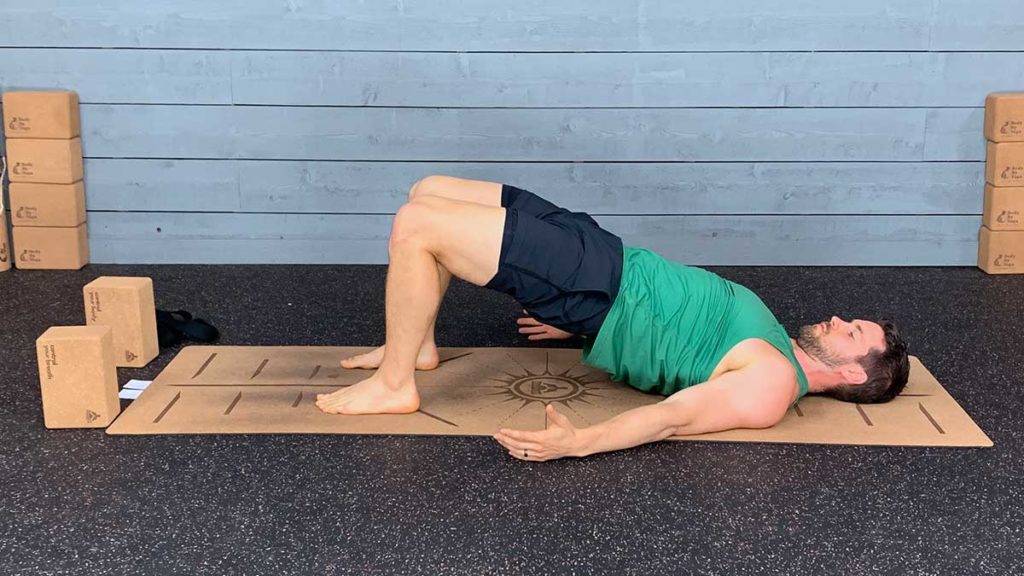
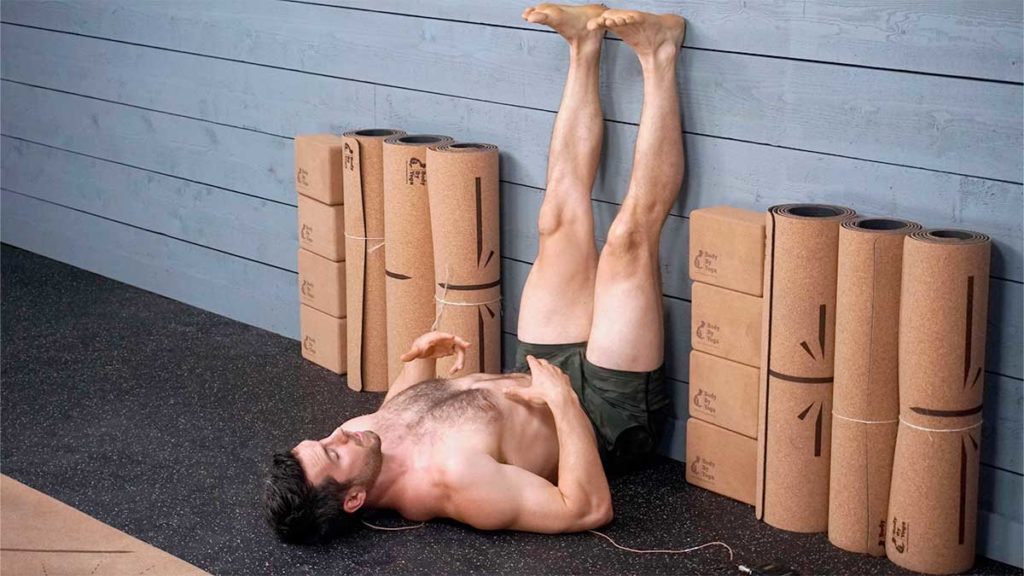
Finally, Savasana, which inspires some to fall asleep at the end of a yoga class, is the perfect pose to end with, preferably while lying in bed. Sleeping on your back is ideal for maintaining proper alignment and overall health. However, most people sleep on their sides or stomachs, falling asleep on their backs only by accident. Making Savasana part of your sleep ritual makes you more likely to fall asleep in this preferred position.
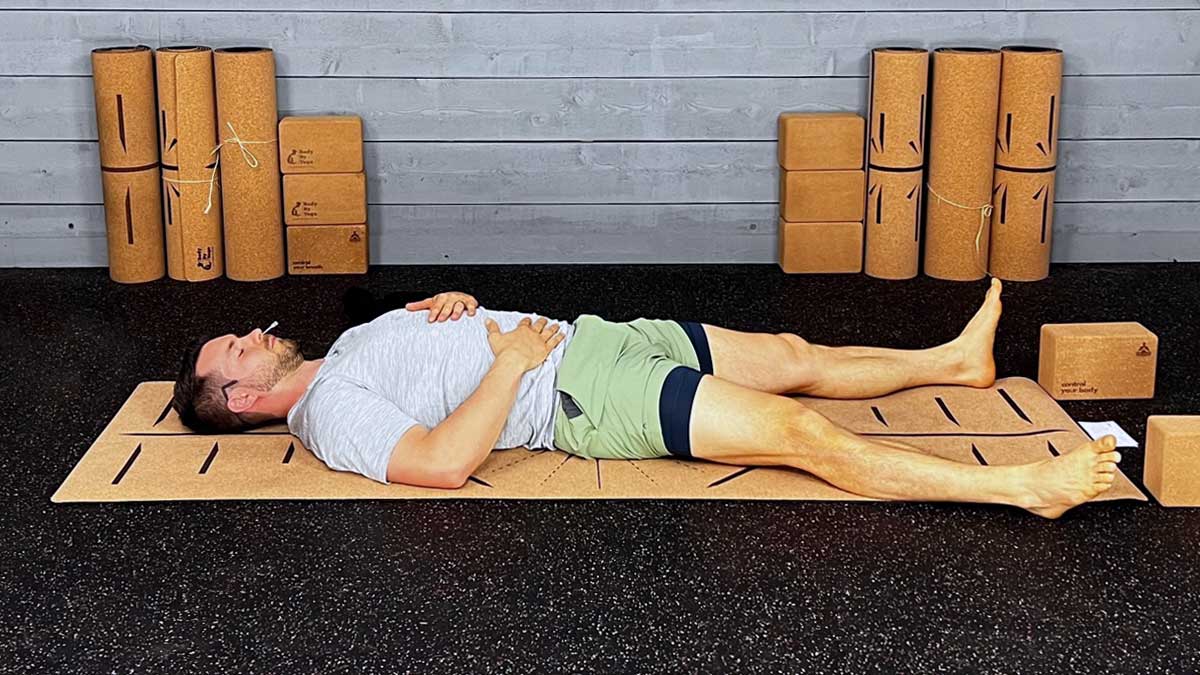
The Benefits of Deep Sleep
During sleep, your brain has the potential to repair, restore, and lock in all that it’s learned the previous day. Your body goes through a similar process where growth hormone and testosterone are released. It’s when your fascia, muscles, and neuromuscular system go through an upgrade from the workout you hopefully underwent earlier in the day. These are just a few benefits of getting better sleep.
Bottom line: without adequate sleep, recovery won’t happen, and you won’t improve physically and mentally. Sleep is a skill like anything else that can be learned and should rank as a high priority. There’s a reason it has become a focus of professional athletes in recent years. They know it’s one area where they can dramatically boost performance without putting forth greater physical effort or resources.
On the other hand, sleep and mental health go hand in hand. Lack of sleep or inadequate slumber is associated with poor physical health, poor mental health and weight gain. Staying up late often is correlated with late-night eating and alcohol use, which hinders sleep. It’s a vicious cycle.
But what makes a successful night’s sleep? How do you know if your brain and body had an optimal upgrade and will be ready to perform at a higher level? How can you ensure you wake up with the energy, vitality, and positive outlook necessary to achieve?
Deep Sleep vs. REM Sleep
First, it’s necessary to understand sleep cycles. Sleep consists of light sleep, REM sleep, and deep sleep. REM (rapid eye movement) sleep is critical for brain performance and organizing memory to better apply what you learn. REM sleep is where the brain upgrades the stimulus of the day. When you get high-quality REM sleep, you wake up refreshed and refocused.
Whereas REM sleep helps above the neck, deep sleep helps your body. This is an oversimplification, as your body is an integrated system and rest helps everywhere. But deep sleep releases the optimal growth hormone and testosterone necessary for your body to recover from the stimulation you gave it that day. This results in increases in your lean body mass, decreases in body fat, and an overall improved recovery of all your body’s physical systems. Deep sleep is essential for restoring muscle and building immunity.
It’s impossible to perform at a high level without great sleep. Sleep cycles range from 90 to 120 minutes. Your body cycles between light to REM to deep sleep and back to light sleep. You go through three to five sleep cycles per night depending on how long you are asleep.
How to Improve Deep Sleep
The key to great sleep is consistency, getting between seven and nine hours of sleep a night during the same timeframe every night. High achievers sometimes pride themselves on how they can operate on little sleep. Time management is crucial to high performance, and this includes rest. If you prioritize other things over sleep – alcohol, television, the Internet, and social life – you are compromising your performance and health.
In an ideal world, go to sleep at the same time each night so your body can continue to build a rhythm to its day and ultimately to your sleep. The more sleep you get before midnight, the better night’s sleep you will receive. You’ll undergo more REM and deep sleep, releasing more positive hormones.
Sleeping from midnight to 9 is not equivalent to sleeping from 9 p.m. to 6 a.m. They leave you in two different states of rest (or unrest). The length of sleep is open for debate. It’s more important to be consistent. If that means seven hours, be consistent with seven hours. That’s because your body likes consistency. It needs to know it can count on you to be consistent in letting it know how much time it has to undergo this overnight upgrade.
Just as you always want to know how long work or yoga practice will last, your body wants to know how long it has to sleep. Once you’ve installed that consistent window for sleep, the body can establish its game plan for how long it will stay in each sleep cycle and make sure you wake up at the top of your sleep cycle each night.
The body does a great job at adapting and optimizing based on the situation that you give it, but a consistent sleep situation will produce better outcomes. If you get seven hours of sleep seven nights per week, your body will be in a more optimal state than if you were to get 10 hours one night, four the next, six the following, and 11 the night after that.
Eight hours is considered the gold standard for sleep. The National Institute of Health (NIH) recommends 7 to 9 hours of sleep for adults regardless of age, though people typically get less than that. Strive to obtain that gold standard by following a sleep ritual that will produce both adequate and high-quality slumber.
Watch this is a quick, relaxing 10-minute yoga routine you can use to wind down for the evening and get a better night of sleep. It’s full body, and at just 10 minutes, it’s a great way for you to practice your body awareness and breathing, relieve some stress in your body, and get yourself into a better evening space for your home life.
FAQs
About Dean Pohlman, Founder & CEO of Man Flow Yoga, Author of Yoga Fitness for Men, Expert on Yoga Fitness for Men.
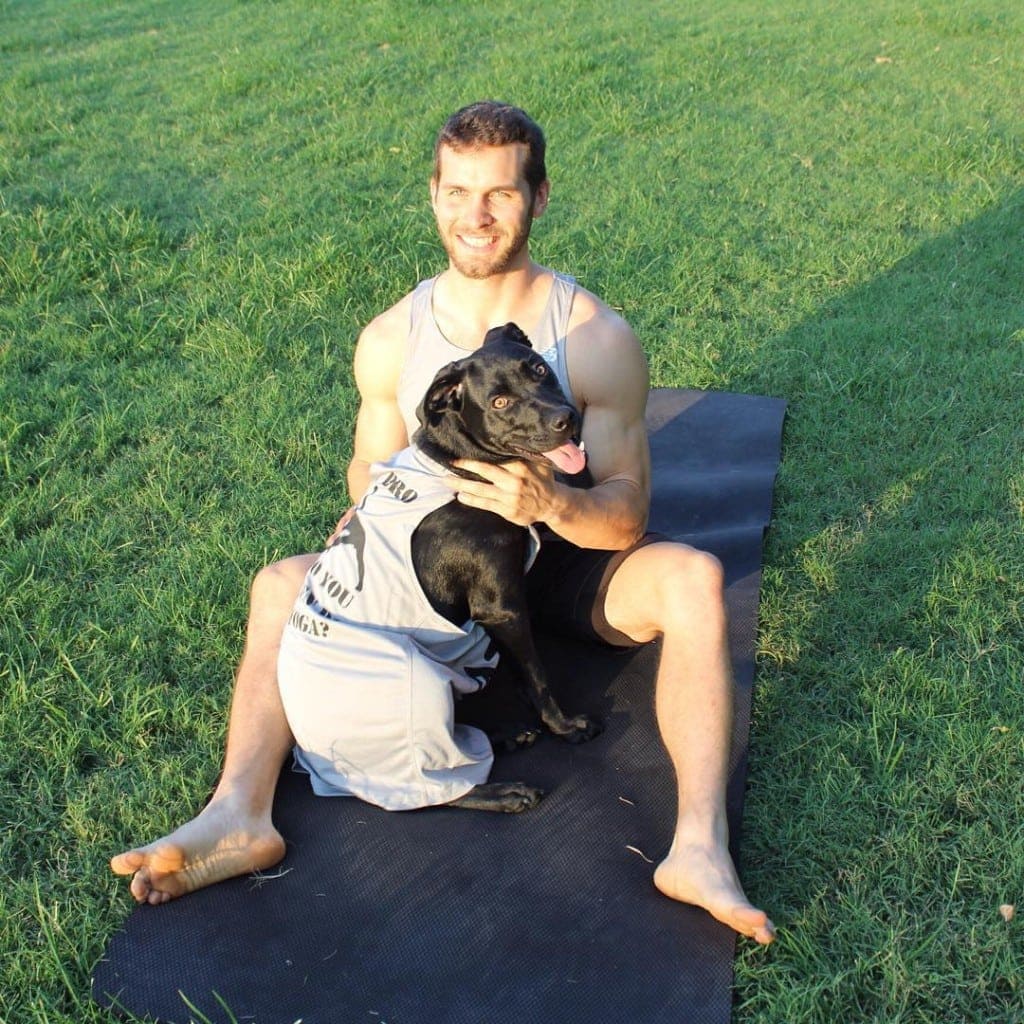
Dean Pohlman is an E-RYT 200 certified yoga instructor and the founder of Man Flow Yoga. Dean is widely considered to be an authority on Yoga for Men. He has worked with physical therapists to create yoga programs for back health and spinal recovery. His workouts and programs have been used by professional and collegiate athletes, athletic trainers, and personal trainers; and have been recommended by physical therapists, doctors, chiropractors, and other medical professionals.
Dean is a successfully published author through DK Publishing (Yoga Fitness for Men), selling 35,000 copies worldwide in English, French, and German; in addition to being a co-producer of the Body by Yoga DVD Series, which has sold over 40,000 copies on Amazon since its release in 2016.
Man Flow Yoga has been featured in Muscle & Fitness Magazine, Mens’ Health, The Chicago Sun, New York Magazine, and many more major news media outlets.
